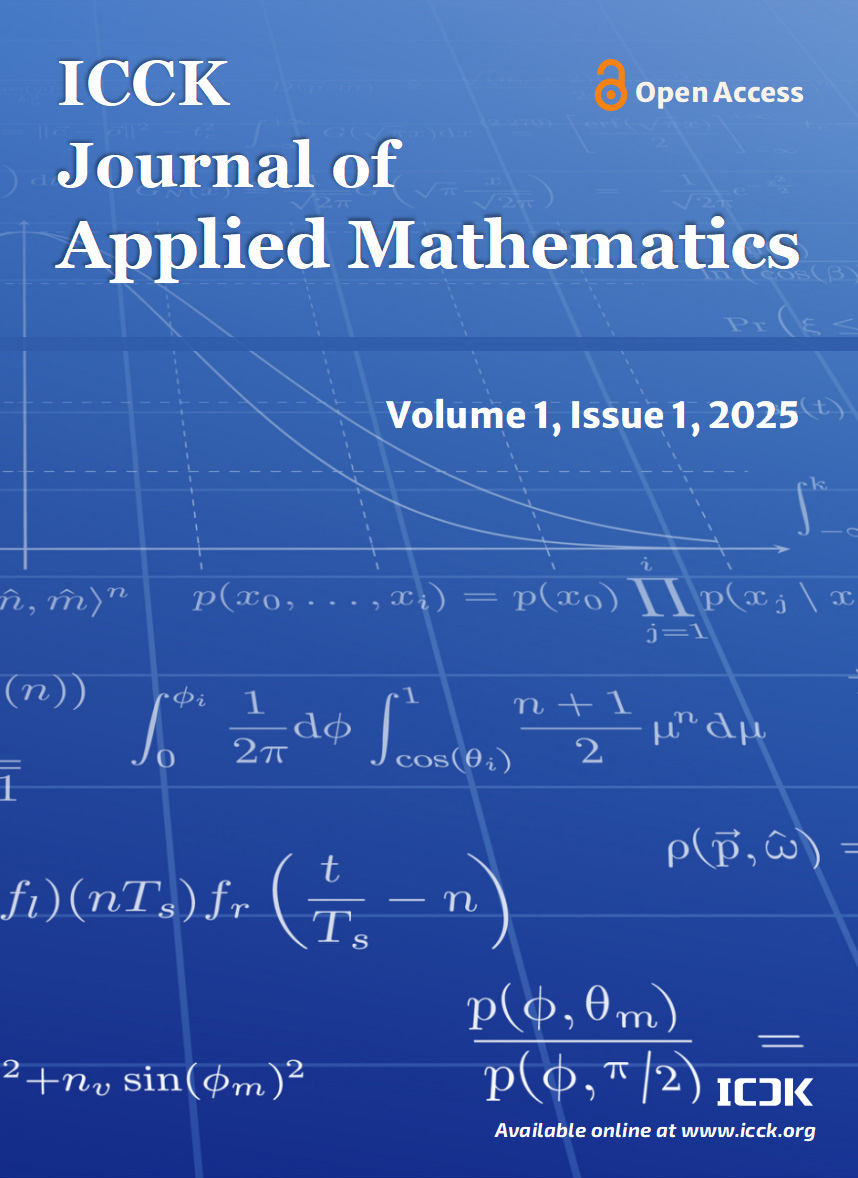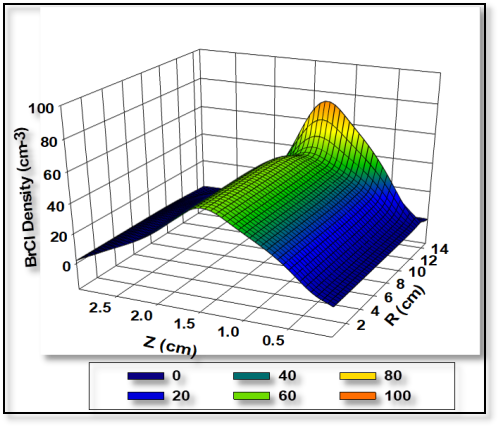Abstract
This research focuses on the computational analysis and numerical investigation of BrCl ion density within an HBr-Cl_2 capacitively coupled plasma system. A two-dimensional fluid simulation model was developed to examine the influence of varying the HBr: Cl_2 gas ratio on BrCl ion formation. The simulation framework incorporates fundamental plasma fluid equations, including the continuity equation, momentum conservation equations, and energy conservation equations, along with appropriate boundary conditions. The investigation specifically explored gas composition variations ranging from 10% Cl_2 and 90% HBr to 90% Cl_2 and 10% HBr, incremented in 20% steps. The radio frequency (RF) driving frequency was fixed at 13.56 MHz throughout the simulations. Results revealed a positive correlation between the Cl_2 concentration and the BrCl ion density; higher Cl_2 content led to increased BrCl ion production. Notably, elevated BrCl ion densities were observed near the electrode edges and at the electrode center. The generated two-dimensional and three-dimensional simulation data offer foundational insights for practical industrial applications, particularly in advanced semiconductor etching and deposition technologies.
Keywords
two-dimensional fluid simulation
BrCl ion density
numerical analysis
Data Availability Statement
Data will be made available on request.
Funding
This work was supported without any funding.
Conflicts of Interest
The authors declare no conflicts of interest.
Ethical Approval and Consent to Participate
Not applicable.
Cite This Article
APA Style
Shahzadi, I., & Ahmed, M. W. (2025). Numerical Analysis of HBr-Cl2 Capacitive Coupled Plasma Using a Two-Dimensional Fluid Model. ICCK Journal of Applied Mathematics, 1(1), 15–24. https://doi.org/10.62762/JAM.2025.440251
Publisher's Note
ICCK stays neutral with regard to jurisdictional claims in published maps and institutional affiliations.
Rights and Permissions

Copyright © 2025 by the Author(s). Published by Institute of Central Computation and Knowledge. This article is an open access article distributed under the terms and conditions of the Creative Commons Attribution (CC BY) license (
https://creativecommons.org/licenses/by/4.0/), which permits use, sharing, adaptation, distribution and reproduction in any medium or format, as long as you give appropriate credit to the original author(s) and the source, provide a link to the Creative Commons licence, and indicate if changes were made.


 Submit Manuscript
Edit a Special Issue
Submit Manuscript
Edit a Special Issue

 Copyright © 2025 by the Author(s). Published by Institute of Central Computation and Knowledge. This article is an open access article distributed under the terms and conditions of the Creative Commons Attribution (CC BY) license (https://creativecommons.org/licenses/by/4.0/), which permits use, sharing, adaptation, distribution and reproduction in any medium or format, as long as you give appropriate credit to the original author(s) and the source, provide a link to the Creative Commons licence, and indicate if changes were made.
Copyright © 2025 by the Author(s). Published by Institute of Central Computation and Knowledge. This article is an open access article distributed under the terms and conditions of the Creative Commons Attribution (CC BY) license (https://creativecommons.org/licenses/by/4.0/), which permits use, sharing, adaptation, distribution and reproduction in any medium or format, as long as you give appropriate credit to the original author(s) and the source, provide a link to the Creative Commons licence, and indicate if changes were made. 